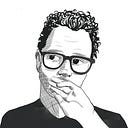Member-only story
How the “secret language” of filmmaking works
Thanks to YouTube, Netflix, and even Instagram, more of us are learning to convey our experiences visually. But what does it really mean to be a visual storyteller?
In our frenetic and visual world, where we are constantly assaulted with a high definition barrage of TV, Netflix, YouTube and cinema, it is hard to imagine how the first moving images, flickering raggedly at 12 frames per second on the wall of an 1888 workshop in Leeds in England, must have appeared to their inventor, Louis Augustin Le Prince.
We know moving images, despite their crude early form, had a magical quality for those who saw them. But like all media, it took people a long time to figure out what they were doing with it.
It wasn’t until 1903 that an American cameraman-turned-director, Edwin S. Porter, realised that you could tell a story by cutting together different - separately filmed - shots. The result, was The Great Train Robbery (1903) an early landmark in narrative cinema.
